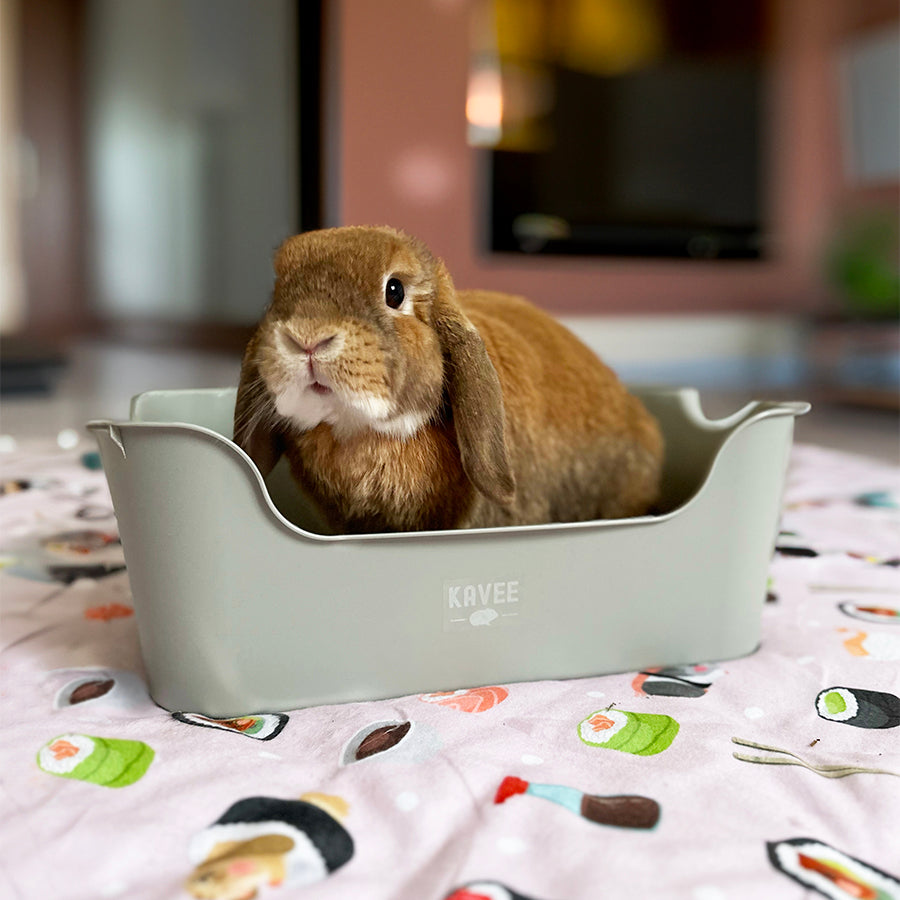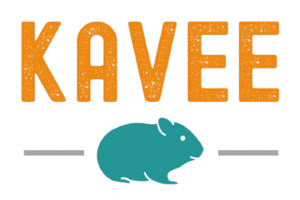There’s nothing more exciting than preparing to welcome a new lovely pet into your home. But aside from all the excitement, it’s important that bunny parents get ready by learning about rabbit care and preparing their home for rabbits.
Here at Kavee, our preference is to keep our buns indoors, with a lovely free-roaming area and a spacious rabbit cage they can retreat to whenever they please. This way, you can get plenty of bunny cuddles and extra peace of mind!
In this article, we’ll cover the all-important rabbit safety tips and considerations for preparing your home for rabbits - ensuring your buns stay safe, relaxed, and healthy in their new environment.

Choosing the Right Location for Your Rabbit's Cage
Even if you plan to let your bunnies roam freely in a designated area, it’s still helpful to have a C&C cage on hand. A rabbit cage keeps them safe when you can’t supervise them and also gives them a peaceful area to sleep and relax.
When deciding on the ideal spot for your rabbit cage setup, you’ll first need to make sure there's plenty of room. Remember - a rabbit cage that meets the recommended size requirements is a lot bigger than most people think!
You should also bear the following considerations in mind when choosing the location for your bunny’s new digs:
- Noise level - it’s a nice idea to keep your rabbits in a room that’s at the heart of the home, but try to opt for a quieter, less stressful location where possible.
- Temperature & humidity - make sure to place your rabbit cage in a nice, neutral spot that is well-ventilated. Avoid extremes in temperature, like cold draughts, or direct exposure to radiators and direct sunlight.
The good news is that C&C cages come in a variety of different customizable shapes and sizes to fit all kinds of room layouts (plus, they can be customized to fit in with your decor too!).

Rabbit-Proofing Your Home
When you’re setting up a room (or multiple rooms!) for your rabbits to roam freely, try and look at the world from their point of view. Could they reach anything dangerous with just a hop? How many things could they potentially nibble on?!
It’s important to bunny-proof the space your rabbits will live in, otherwise they will engage in their favorite natural behaviors like chewing, digging, and burrowing in no time. That could be risky for their safety or your furniture!
Rabbit Safety Tips
Firstly, make sure that you hide all cables. Bunnies love to chew, so don’t risk your expensive gadgets or put your bunny’s health at risk with live wires.
Next up, keep houseplants out of reach (these could be toxic to your sweet floofs). You’ll also want to secure any loose items or your rabbits could assume they’re toys to be played with and start throwing them around!
You can also try adding a barrier to their free-roam area to limit where your inquisitive buns can go. And pop down a few thick blankets or scratch mats on furniture to protect soft furnishings from any bunny paws!

Creating Safe and Fun Exercise Spaces
Rabbits are born athletes, so they’ll thrive with plenty of room to hop about and enriching activities that keep their minds engaged. Just think about how busy wild rabbits are with foraging for food - you need to recreate something similar for your indoor buns too!
If you can’t provide a bunny-proofed room, then consider using a handy collapsible playpen that can be moved into any convenient spot.
Be sure to provide plenty of bunny-safe toys and accessories in their exercise area, whether that’s wooden chew toys that will help to grind down their teeth, like DIY logic puzzles.
For example, try knotting up some treats in a cloth or stuffing them inside an empty cardboard tube with some paper shavings for your bunnies to find!

Handling Household Noise and Stress
Rabbits are small prey animals, so any unexpected loud noises are going to cause them stress. In the long run, this could seriously impact their health and happiness.
If your bunny is located in a busy area of the house, consider switching to a quieter location to lower their stress levels. If you have kids, explain to them that they need to be quiet and calm when they’re around the buns.
Other larger animals in the home like cats and dogs can also cause your rabbits to feel nervous. While it is possible to successfully introduce other pets to your bunnies, you should take it slowly and always closely supervise any interactions. And if it doesn’t work out, it’s kinder to keep your pets separate!

Bathroom Habits and Litter Training
You’ll also want to consider your bunny’s toilet habits. Incredibly, rabbits poop around 200-300 times a day - not exactly what your carpets want to hear when you’re setting up your home for free-roaming!
Fortunately, rabbits are naturally clean animals that prefer to go to the toilet in one spot, so with a little bit of litter training and lots of encouragement, you’ll be well on your way to an accident-free home. At Kavee, we have even developed a litter tray specifically for small furries, designed with high sides to easily keep all poops in one place!
Follow the next simple steps on how to successfully litter train your rabbits.
Step 1: Place several litter trays in your rabbit’s free-roam area
To start with, let your bunnies decide their favorite toileting spot by dotting a few litter trays around their living area. A corner of the room is usually a safe bet, because it’s a more secure lookout spot for your pooping buns!
Pro tips:
- Limit your buns to a playpen or a single room to start with - a smaller space is much quicker to toilet train in!
- Scoop a little of their poop and pop it into the litter trays. This way, they instinctively know where to go to the toilet.
- Opt for dust-free and recycled paper pellets to look after your bunny’s health (and the environment!).
Step 2: Slowly remove the litter trays until just one remains
Once your bunnies have picked a favorite, gradually start to remove the litter trays until one litter tray is left. If you notice they gravitate to one tray more than others, then make sure to leave the last one in their chosen location.
After cleaning the litter tray at the end of the day, leave some poop behind so they can easily sniff out their toilet.
Step 3: Clean up any accidents quickly and thoroughly
If rabbits like to go where they’ve been previously… then it should come as no surprise that any accidents should be cleaned up immediately and very thoroughly! If your bunnies follow their noses to the last place they pooped, this will only lead to more little accidents.

Conclusion
There’s so much to think about when you bring your sweet bunnies home - from choosing the right cage to properly rabbit-proofing your home!
However, with just a bit of planning, you can ensure you have the right setup for perfect indoor rabbit care. While our rabbit safety tips will also ensure that they stay out of danger (and, as a nice bonus, your furniture survives!).
For C&C cages that are designed to fit seamlessly into any home setting - all the while providing a safe, comfortable and durable space for your bunnies - check out our wide range. And don’t forget our ear-resistible fleece liners too!





